Over centuries, momos have made inroads into cuisines across the world, including ours. Sunday mid-day explores regional Indian variants to make it a momo-friendly monsoon
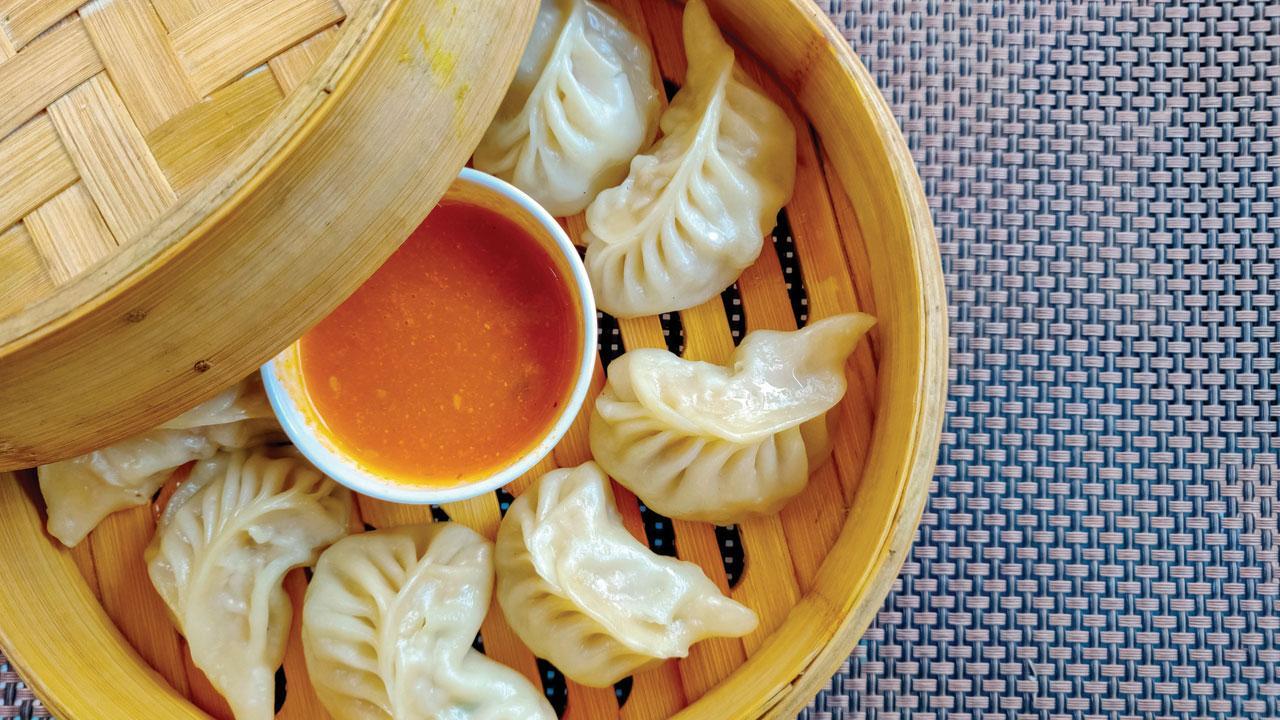
It is said that momos came to India with Tibetan refugees in the 1960s
Minced meat or vegetables, carefully wrapped in dough, steamed or fried to perfection—just like the capital city, Mumbai too, has taken a liking to momos with stalls cropping up at every corner. It is believed that momos came to India with Tibetan refugees in the 1960s, and are now savoured across the country. However, the debate around its roots involve both the Tibetans and the Nepalese, each with their own origin story. Interestingly, in the hills of northern India, where momos are a staple, they are made and consumed differently. Chef Sherry Mehta, who grew up in Shimla, remembers momos made with buckwheat flour and stuffed with turnips and and another version made with chives and chow-chow (chayote squash).
ADVERTISEMENT
“Buckwheat gives it a different texture and adding turnips along with leeks and green chillies gives it a very pleasant taste. Chow-chow tastes like lauki, so even that tastes interesting. The cabbage and carrots came much later, when momos went mainstream,” she tells us. Further up in the hills of Manali, soupy mutton momos are a mainstay. Home chef Nikita Kuthiala, who has travelled in the interiors of Himachal Pradesh to learn about local cuisines, says, “The people of Kinnaur and Lahaul eat mutton momos, while those in Dharamshala and McLeodganj, prefer pork momos.”
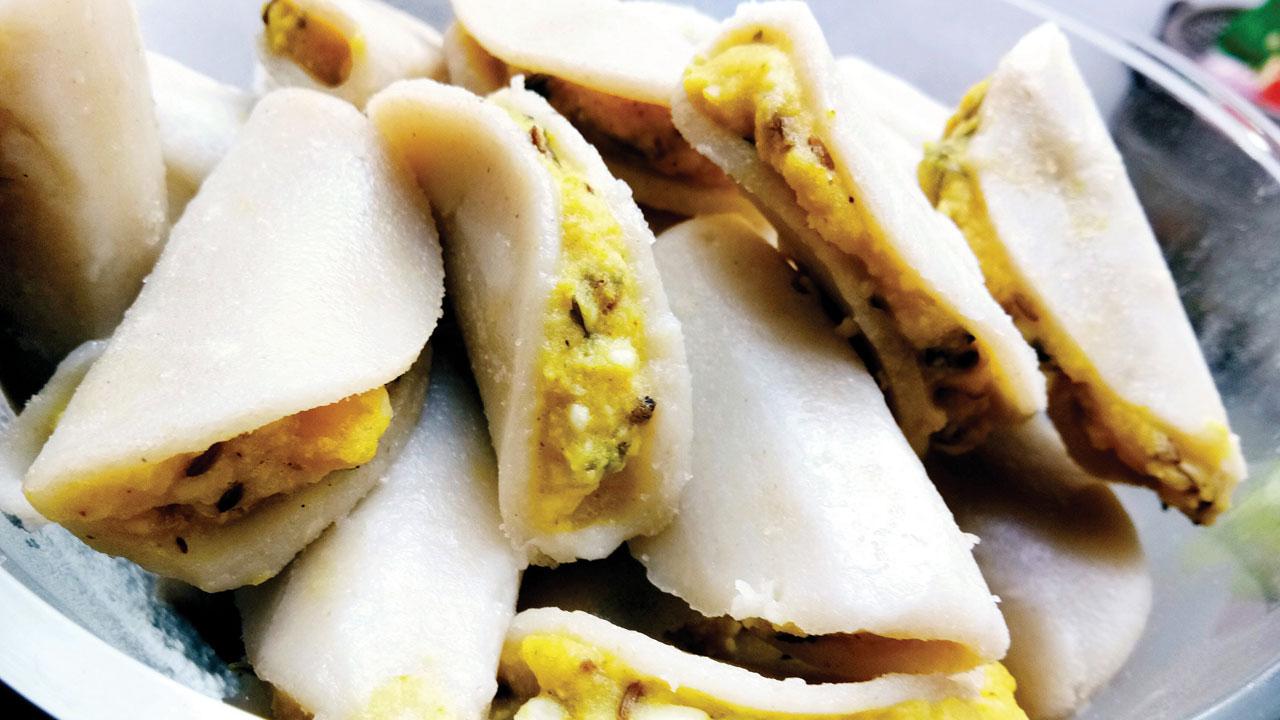
Fara or phara is a nutritious protein-rich breakfast dish popular in Uttar Pradesh, Bihar and Chattisgarh
In the states of Uttar Pradesh, Bihar and Chhattisgarh, there’s a healthy and nutritious protein-rich breakfast dish called farra or phara. Made with soaked chana dal flavoured with green chillies, fresh coriander leaves, and ginger, stuffed in rice shells, it is either steamed or boiled and served with green coriander chutney. chutney. They are time-consuming to make but worth the effort. Some like it crispy, so the steamed farra is stir-fried with a tempering of curry leaves and mustard seeds. The stuffing can be experimented with, so you’ll find ones with kheema, especially in Lucknow.In Bihar, farra is called pitha and can be sweet or savoury. In the north, the sweet version often has jaggery, coconut and chenna.
Chef Pallavi Nigam Sahay has been having farras stuffed with chana or urad dal all her life as a Madhya Pradesh staple, but she witnessed true love for the dish when she visited her husband’s maternal home in Bihar. “The preparation of pitha [as it is called in Bihar] is the same; except that at at his maternal grandmother’s home, it is occasionally made with wheat flour; the stuffing has ginger and the tadka has sesame seeds, which adds the smokey flavour. Both ingredients add an edge. It’s what my husband can have for breakfast, lunch and dinner, and I often make it when I am buttering him up for something,” she laughs. In Karnataka, there is also a version similar to fara called khara kadubu, with the addition of coconut.
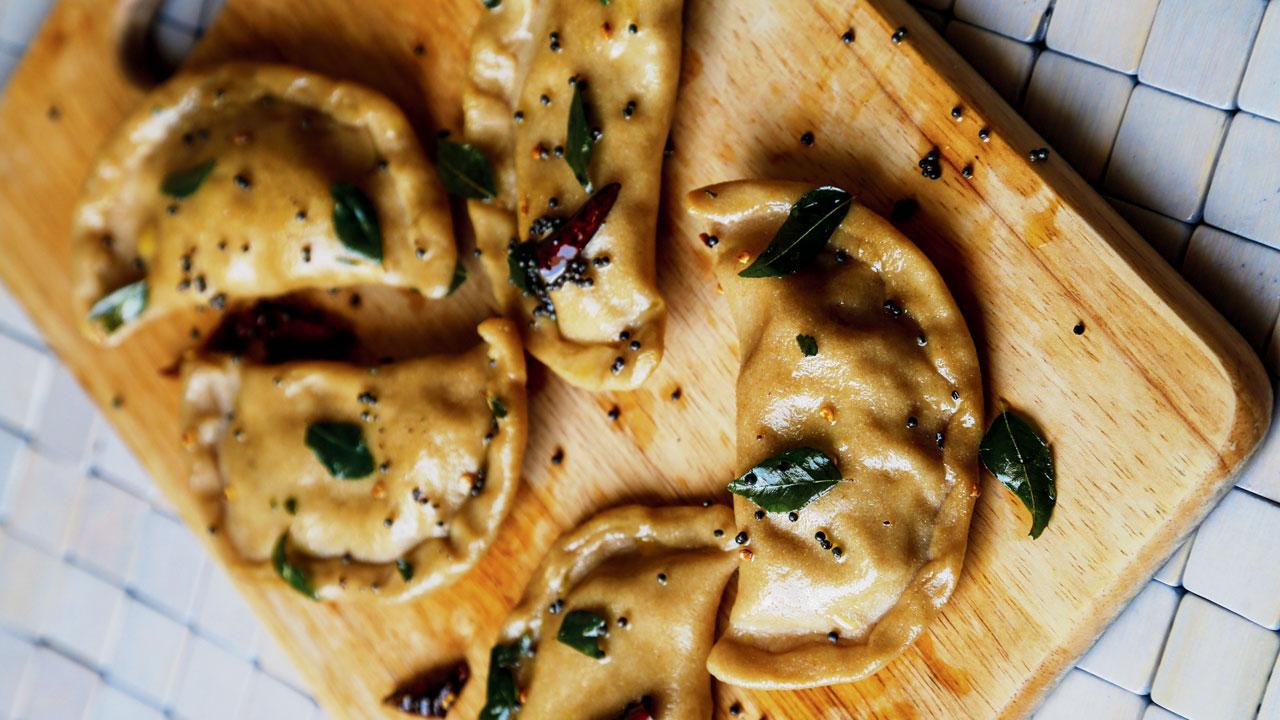
Bihari pitha, made with wheat flour and stuffed with dal, gives the dish an interesting texture
Closer to the coast, Maharashtra has modaks, Karnataka calls it modhaka, Tamil Nadu and Kerala have kozhakkattai and Andhra Pradesh has kudumu. Bengalis too, make a sweet version of the dumplings called dudh puli pitha where steamed dumplings are simmered in condensed milk. Made with rice flour, the core ingredients of the filling are coconut and jaggery, along with raisins, cashew nuts and cardamom. A slightly different variant is patoleos from Goa. Chef Alvinia D’souza started making patoleos during the pandemic to relive her grandma’s memories. The turmeric leaves in which the patoleos are wrapped and steamed, some from farm in Dodamarg.
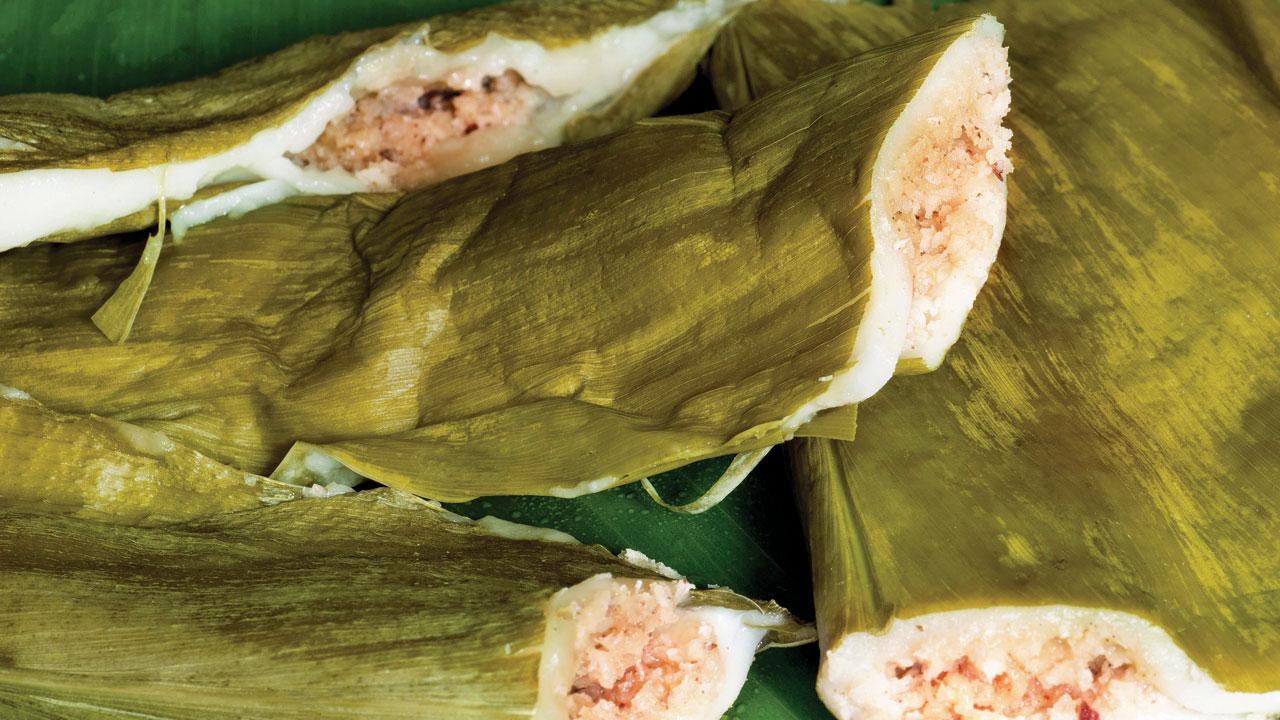
Patoleos are flat Goan rice dumplings steamed in turmeric leaves with a filling of jaggery and dessicated coconut
Marian D’costa, founder, Aiyo Patrao Bandra, a home kitchen dedicated to Goan Portuguese and Keralite food, tells us how patoleos have a celebratory element to them. August 15 is the feast of the Assumption of Mother Mary, where she is believed to have ascended to heaven; every Goan and Mangalorean Catholic household exudes a sweet piquant flavour as the turmeric leaves steam away in the pressure cookers. “This is also made during family milestones in Goa—childbirth, new job, new house,” she explains. “Goans use the black ‘pyramid jaggery’ instead of regular golden jaggery,” she adds. Interestingly, pateleos are made in Hindu households around the same time during Ganesh Chaturthi.
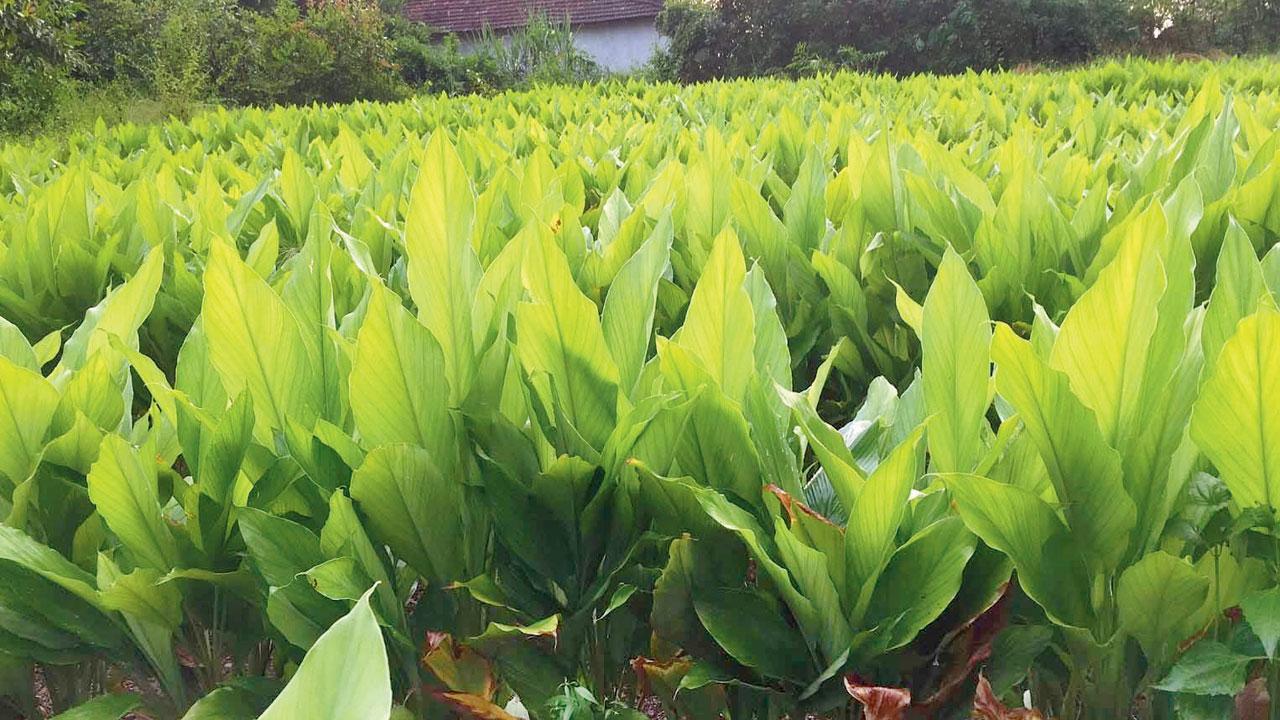
Alvinia D’souza grows her own turmeric leaves to make patoleos
In Mangalore, dumplings have a taste of the sea. Home chef Tejal Suvarna tells us about the stuffed prawn dumplings she grew up eating in her grandmother’s kitchen. Called yetti pundi, these round rice dumplings are stuffed with a mixture of prawns fried in ginger-garlic paste, tomatoes, and coconut, and then steamed. “I remember sitting snugly on the train seat with a tiffin of yetti pundis. There’s also a sweet version called ‘neer pundi’, a common breakfast dish in Mangalore, in which rice balls are cooked in ghee and immersed in coconut gravy,” she adds.

Chef Sherry Mehta and Chef Tejal Suvarna
For Christians from Kerala, kozhukattai is closely associated with Palm Sunday. Explaining the significance, home chef Natasha Joy Jibu says, “Kozhukattai symbolises the stones that the Jewish people threw on Jesus, when he entered Jerusalem on a donkey.” The thick outer covering is made by mixing rice flour with ghee, and inside, an aromatic blend of coconut and jaggery and cardamom assaults the tongue when one bites into it.” Jibu remembers eating kozhukattai every evening when she returned from school.
Soupy mutton momos
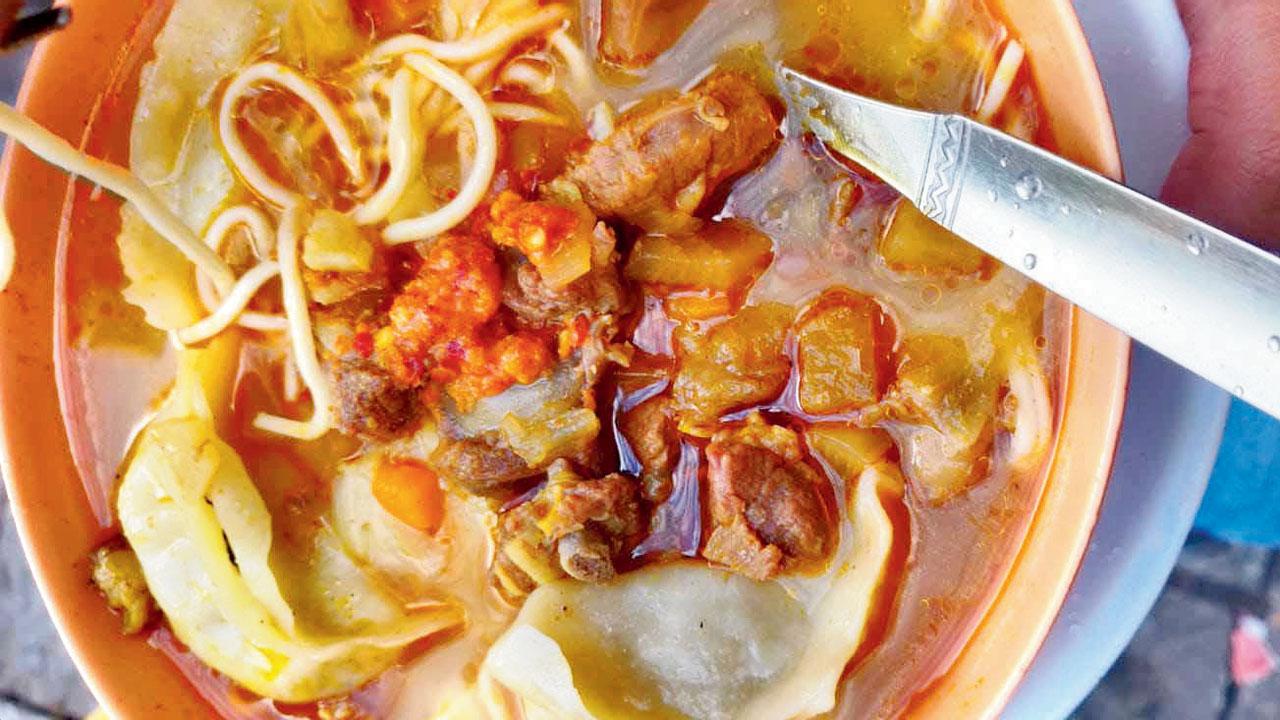
INGREDIENTS
For mutton stock
1 kg mutton bones
1 tbsp salt
1 tsp vinegar
350 gm onions
350 gm carrots
2 bay leaves
10 peppercorns
2 litres water
A few spring onions
A pinch of black pepper
Boneless mutton chunks (boiled)
METHOD
Transfer the bones to a pot and cover them with hot water. Simmer gently to let scum float to the top. Discard the scum along with all the impurities. Chop onions and carrots into quarters. Add bay leaves, peppercorns, onions, and carrots to the pot. Pour room-temperature water into the pot. Let it simmer gently on the lowest flame for three hours. Strain the soup in a large bowl. Discard the boiled onions, carrots, and mutton bones. Season with salt and freshly-ground pepper. Garnish with chopped spring onions. Add mutton chunks
as per desire and cooked noodles if you like.
For momo’s shell and filling
1 1/2 cups all purpose flour
2 1/2 minced meat
1 cup chopped fresh cilantro
1 cup chopped onions
4 tbsp minced garlic
4 tbsp minced peeled ginger
2 tbsp ground cumin
1 tsp ground cinnamon
Salt and black pepper
METHOD
Mix together the flour and 1 1/2 cups room temperature water in a bowl. Knead the dough well until it is medium-firm. Cover and let rest for an hour. Meanwhile, mix the minced meat, cilantro, onions, garlic, ginger, cumin, cinnamon, salt and pepper in a bowl. Spray a steamer pan with cooking oil. Place a tablespoon of the chicken filling in the middle of a wrapper. Use your right thumb and index finger to start pinching the edges of the wrapper together. Place the momo in the steamer pan. Fill the steamer pot halfway with water and bring to a boil. Set the steamer pan with the momos on top of the pot and cover with a tight lid. Steam until cooked. Add to the mutton soup and enjoy on a rainy late afternoon.
Yetti pundi (steamed prawn stuffed rice dumplings)
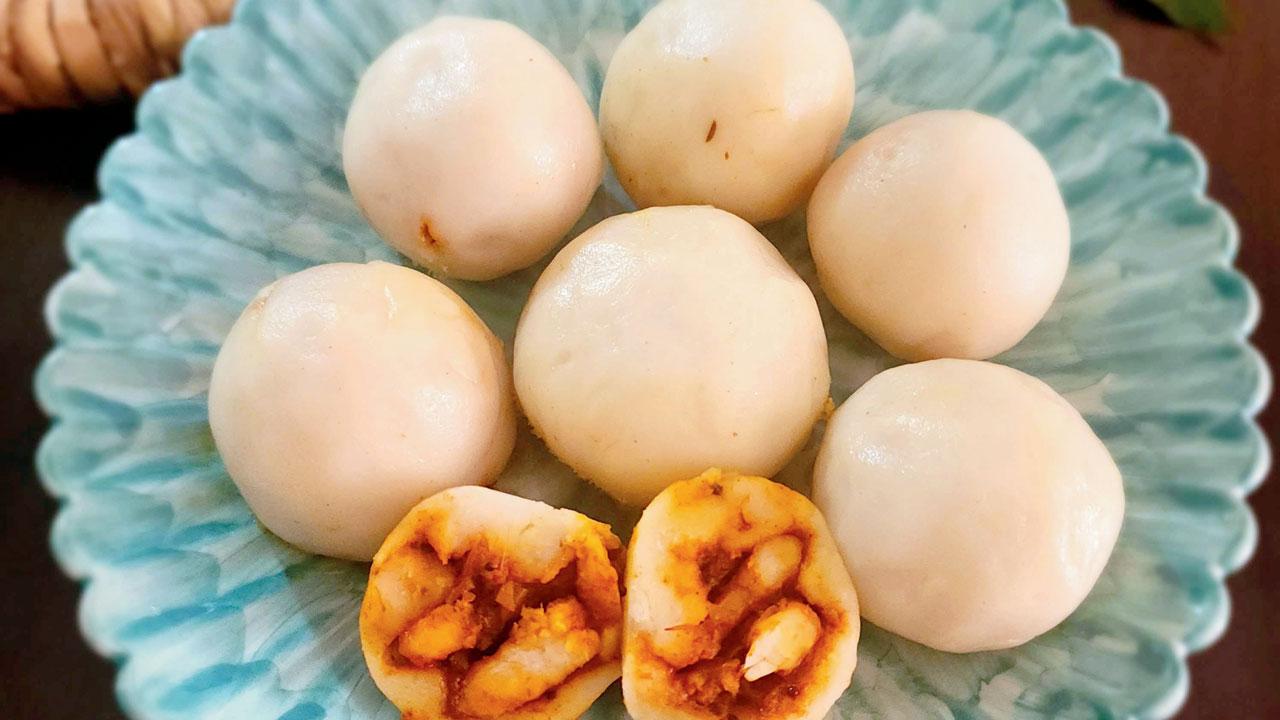
Ingredients
500 gm ocean prawns, cut into small pieces
4 onions, finely chopped
1 tomato, finely chopped
2 tsp ginger garlic paste
3 tbsp Kashmiri chilli powder
1 tsp garam masala powder
1/2 tsp black pepper powder
1.5 tsp dhania jeera powder
2 sprigs of curry leaves
1/4 cup coriander leaves
1 cup of grated coconut
Salt as per taste
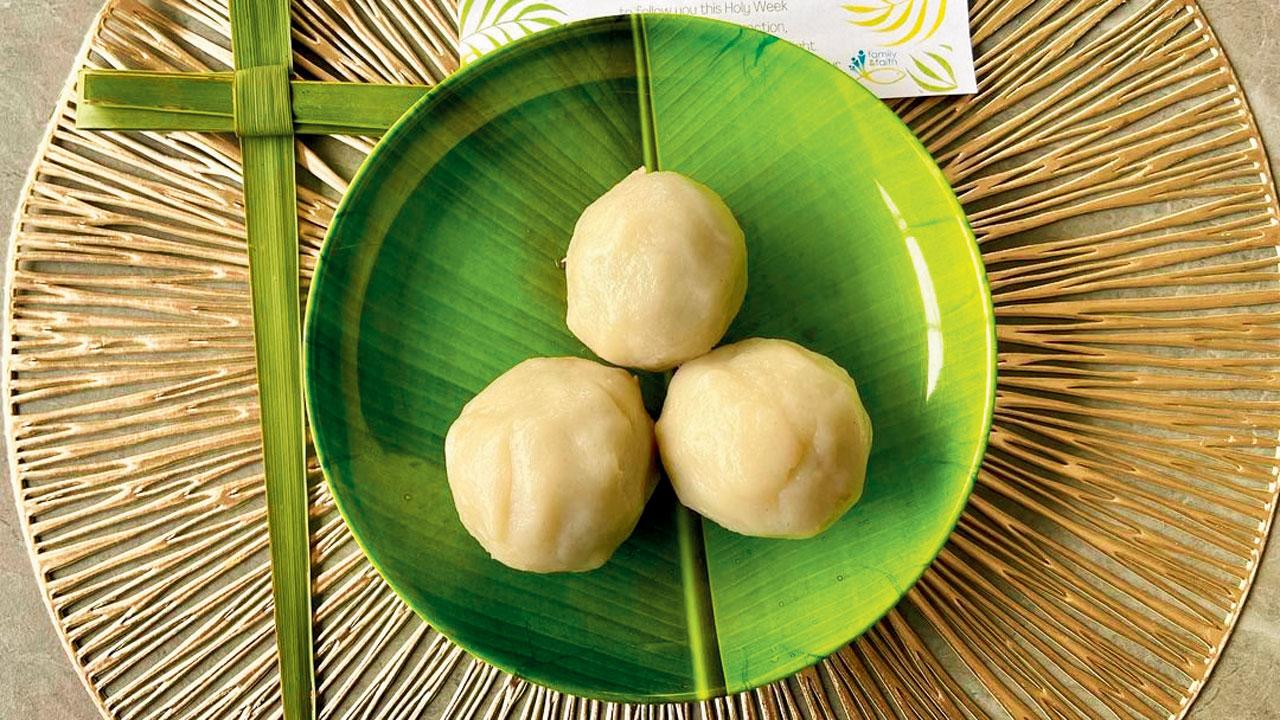 For Christians from Kerala, kozhukattai is closely associated with Palm Sunday
For Christians from Kerala, kozhukattai is closely associated with Palm Sunday
For the dumpling
3 glasses of rice flour
Warm water as per requirement
Salt to taste
Oil to grease the hands
To prepare the prawn stuffing
Heat oil in a pan, add ginger garlic paste and curry leaves and cook till the raw smell disappears. Add onions and cook till golden, followed by tomatoes and half of the coriander leaves. Cook till oil leaves the sides, then add the prawns and pepper powder, chilli powder, dhania jeera powder, garam masala and salt, and mix well.
Finally, add the coconut once the prawns cook well, and mix in the remaining coriander leaves. Let the mixture cool well before using it to stuff the pundi.
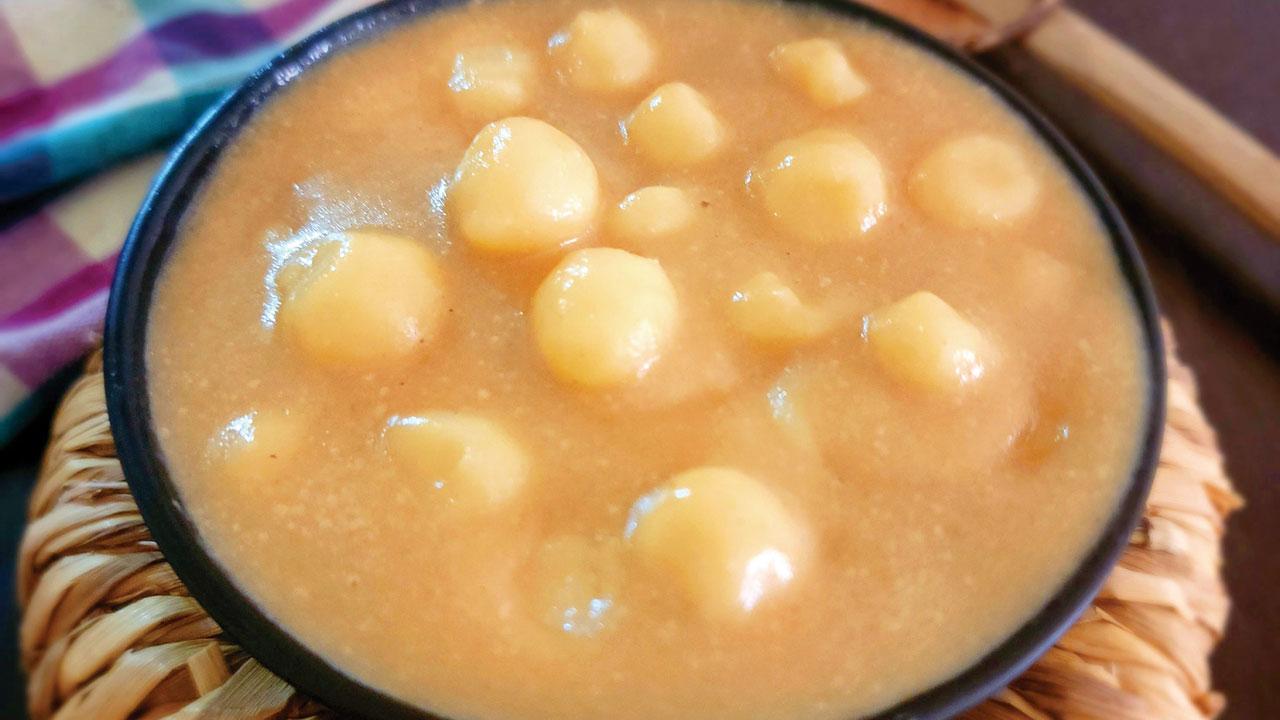
Neer pundi
To prepare the pundi
Mix rice flour and salt, then add water and mix well. Cover the vessel and keep it aside for few minutes before kneading it into a soft dough. Make balls of dough, leave space in the centre and add balls of prawn stuffing. Seal well. Steam these on a greased tray for 10-15 minutes till cooked. Serve hot.
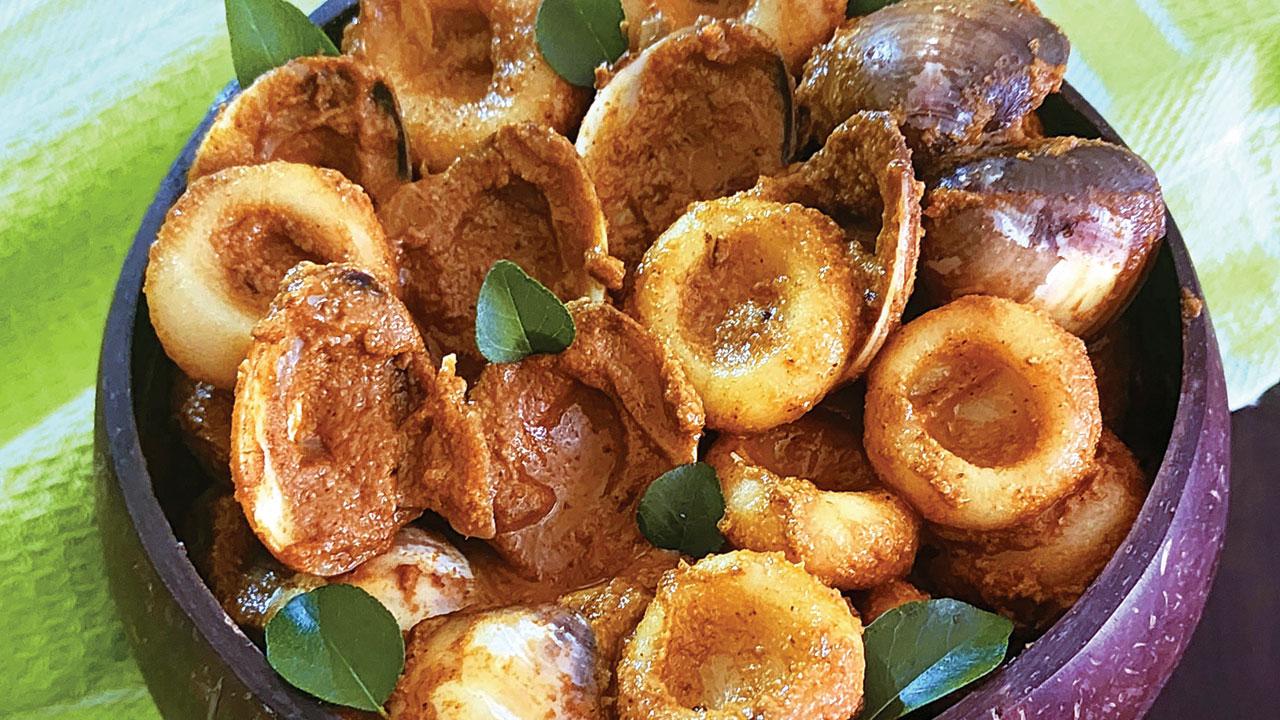
Marvai pundi
Dump on dumplings
There’s a Chinese legend dating back to the Eastern Han dynasty, where the physician Zhang Zhongjing wrapped shredded lamb, black peppers, and medicinal herbs in dough balls shaped like ears, to help people from his village get cured from frostbite. While the story cannot be conclusively proven, hot mutton dumpling soup does help tide over winters. Interestingly, in China, momos means steamed buns, but the momos we are familiar with come from the Newari cuisine in Kathmandu. It is said that Tibetans were introduced to it in the 1640s, when a Nepalese princess married a Tibetan king.
 Subscribe today by clicking the link and stay updated with the latest news!" Click here!
Subscribe today by clicking the link and stay updated with the latest news!" Click here!







